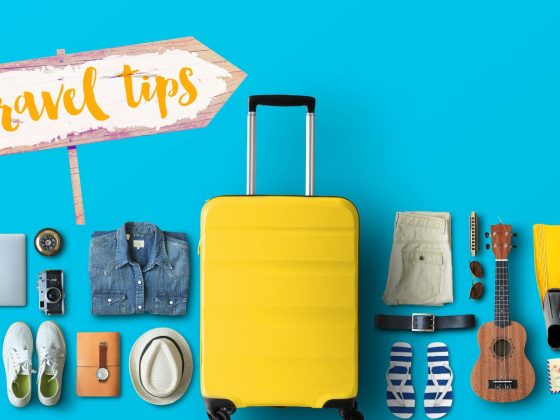When it comes to travel, the most memorable experiences often lie beyond the usual tourist hotspots. Instead of sticking to well-trodden paths and crowded attractions, delve into the heart of your destination to discover its true essence. Seeking out authentic local experiences and hidden gems can transform your trip from ordinary to extraordinary. Finding and enjoying unique places involves more than just relying on standard travel guides. Embrace the tips for an unforgettable trip by leveraging online resources like travel blogs and social media, which can reveal lesser-known attractions and offbeat locations.
Whether it’s a charming village with traditional crafts or a family-owned restaurant serving regional specialties, venturing off the beaten path allows you to connect with the local culture in a way that popular landmarks simply can’t match. This approach not only enriches your travel experience but also helps you create lasting memories that go beyond the typical vacation snapshots.
Exploring Unique Places: Uncovering the Hidden Treasures of Your Destination
Venturing beyond typical tourist attractions can lead to more memorable and authentic travel experiences. Here’s how to find and enjoy unique places that offer a deeper connection to the local culture and environment:
Seek Authentic Experiences
Immersive Local Culture: To truly experience a destination, seek out activities and locations where you can immerse yourself in local culture. This could include:
- Small Towns and Villages: Explore quaint towns or rural areas that might not be on the main tourist trail. For example, visiting a small village in Tuscany, Italy, could offer you a chance to experience traditional Italian life, local crafts, and home-cooked meals.
- Local Festivals: Participate in local festivals or fairs to get a taste of regional customs and traditions. Events like Oktoberfest in Germany or the Lantern Festival in Taiwan provide unique insights into local culture and celebrations.
Family-Owned Establishments: Dine at family-owned restaurants or markets where you can enjoy regional specialties and interact with locals. These establishments often offer a more authentic and personal experience compared to larger, commercialized options. For instance, a meal at a small, family-run eatery in Bangkok could give you a taste of genuine Thai cuisine, often with recipes passed down through generations.
Find Hidden Gems
Use Online Resources: Leverage online tools to discover lesser-known spots and attractions:
- Travel Blogs and Forums: Sites like Lonely Planet and TripAdvisor feature blogs and forums where travelers share off-the-beaten-path recommendations. These platforms can help you find unique places that aren’t highlighted in mainstream travel guides.
- Social Media: Platforms like Instagram and Pinterest are excellent for finding hidden gems. Look for hashtags related to your destination, and explore posts from travelers who share their favorite lesser-known spots.
Explore Atlas Obscura: Atlas Obscura is a website dedicated to unusual and offbeat attractions around the world. From quirky museums to unusual natural formations, it offers a wealth of information on unique destinations that you might not find in conventional travel guides.
Talk to Locals: Engaging with residents and fellow travelers can provide insider knowledge about unique places to visit. Ask for recommendations at your accommodation or engage with locals during your activities. Conversations with people who live in the area can lead to discovering hidden gems that aren’t widely advertised.
Explore Lesser-Known Corners
Vibrant Neighborhoods: Even in popular cities, there are often neighborhoods that offer a different perspective and a more local experience. For example:
- New York City: While Manhattan’s Times Square and Central Park are iconic, neighborhoods like Astoria in Queens or Williamsburg in Brooklyn offer vibrant communities, local eateries, and cultural experiences that are off the beaten path.
- Paris: Beyond the Eiffel Tower and Louvre, explore areas like Le Marais or Montmartre. These neighborhoods provide charming streets, unique boutiques, and authentic Parisian cafes.
Local Markets and Streets: Explore local markets, artisan shops, and street food stalls to get a sense of the area’s culture and daily life. Markets often feature local products and specialties that you won’t find in tourist areas. For instance, the Mercado de San Miguel in Madrid offers a wide array of Spanish culinary delights, while the street markets in Istanbul provide an immersive experience into Turkish culture.
Hidden Natural Wonders: Seek out natural attractions that aren’t as well-known but offer stunning beauty and tranquility. For example, the Faroe Islands, an archipelago between Iceland and Norway, provide dramatic landscapes and fewer crowds compared to more famous destinations.
Budget Considerations: Mastering Your Travel Finances
Creating a detailed budget is crucial for a stress-free and enjoyable trip. A well-planned budget ensures you can enjoy your travels without financial strain. Here’s how to break down your budget and account for all potential expenses:
Create a Detailed Budget
Estimate Major Expenses: Begin by calculating the primary costs of your trip:
- Flights: Look for deals and compare prices across different airlines and booking sites. Consider factors like baggage fees and seat selection when comparing costs.
- Accommodation: Research and book your lodging early. Compare prices on platforms like Booking.com or Airbnb, and read reviews to ensure you’re getting good value. Factor in additional costs such as resort fees or cleaning charges.
- Daily Activities: Plan your activities and estimate their costs. Include entry fees for attractions, guided tours, and any special events or experiences you want to include in your itinerary.
Account for Additional Costs:
- Local Taxes and Fees: Many destinations impose extra taxes or fees that may not be included in the initial price. For example, some cities charge a per-night tax on hotel stays, while others may have mandatory tourist fees. Research these costs ahead of time to avoid surprises. Travel forums and destination guides can provide insights into these additional expenses.
- Park Entrance Fees: If you’re visiting national parks or protected areas, be aware of entrance fees and any additional costs for activities such as guided hikes or boat rentals.
- Tips and Gratuities: Tipping customs vary by country. In some places, a service charge is included in your bill, while in others, tipping is expected. Check local practices to budget for tips and avoid misunderstandings. Websites like TippingCulture.com offer guidance on tipping norms for different destinations.
Factor in Hidden Costs
Local Taxes and Fees: In addition to accommodation and activity costs, be prepared for destination-specific taxes. For instance, some cities have tourist taxes that are added to your hotel bill, while others might impose environmental fees. Research these in advance to incorporate them into your budget.
Gratuities: Tipping practices differ globally. In some countries, a service charge is automatically included in your bill, while in others, you’re expected to leave a tip. For example:
- United States: Tipping is customary and usually ranges from 15% to 20% of the total bill.
- Europe: Many European countries include a service charge, but additional tipping is appreciated.
- Japan: Tipping is generally not practiced and can even be considered rude.
Emergency Fund: Set aside a portion of your budget for unexpected expenses. This fund can cover emergencies such as medical costs, unforeseen travel changes, or extra activities you decide to do on a whim. Aim for a buffer of about 10% of your total budget to handle these situations smoothly.
Track Your Spending
Use Budgeting Apps: Monitoring your expenses during your trip helps you stay within your budget. Apps like Mint, Trail Wallet, or YNAB (You Need A Budget) can assist with tracking spending and managing your finances. These apps allow you to:
- Categorize Expenses: Track how much you’re spending in different categories like dining, transportation, and activities.
- Set Limits: Create spending limits for each category to ensure you stay within your overall budget.
- View Reports: Generate reports to see where your money is going and make adjustments if necessary.
Keep Receipts and Records: In addition to using apps, keep physical or digital copies of your receipts. This helps you review and categorize your expenses later, ensuring you haven’t missed any costs.
Adjust as Needed: If you notice you’re overspending in certain areas, adjust your budget accordingly. For instance, if you spend more on dining out than anticipated, you might need to cut back on shopping or other activities to stay within your overall budget.
Climate and Seasonal Factors: Essential Tips for Planning Your Trip
Understanding the climate and seasonal conditions of your destination is essential for a comfortable and enjoyable trip. Here’s a detailed look at how to plan for different weather scenarios and make the most of seasonal opportunities:
Research Weather Patterns
Understand Local Climate: Before you travel, research the typical weather patterns for your destination during your travel dates. Websites like Weather.com, AccuWeather, and climate-specific guides offer historical weather data that can help you anticipate conditions. For instance, if you’re visiting a tropical destination, expect high humidity and frequent rain, whereas a trip to a northern region in winter will involve cold temperatures and potential snowfall.
Historical Weather Data: Look at historical data to get an idea of the average temperatures and precipitation. For example, if you’re planning a trip to Tokyo in July, you’ll find that it’s typically hot and humid, so packing accordingly is crucial. Climate guides and local tourism websites often provide insights into what to expect during different seasons.
Consider Extreme Weather: Check for any seasonal weather extremes or natural events, such as hurricane seasons or monsoon periods. This information helps you avoid potential disruptions and ensures you’re prepared for any weather-related challenges.
Pack Accordingly
Hot Climates: When traveling to a hot climate, prioritize comfort and sun protection:
- Clothing: Pack lightweight, breathable fabrics like cotton or linen that wick moisture away from your skin. Opt for light-colored clothing to reflect the sun and keep cool.
- Sun Protection: Don’t forget sun protection essentials like wide-brimmed hats, sunglasses with UV protection, and sunscreen with high SPF. A reusable water bottle is also crucial to stay hydrated in the heat.
- Footwear: Choose comfortable, breathable shoes that can handle warm conditions. Sandals or open-toe shoes are ideal for beach destinations.
Cold Climates: For cold weather travel, layering is key:
- Thermal Layers: Start with moisture-wicking base layers to keep sweat away from your body. Add insulating layers, such as fleece or down, for warmth.
- Outerwear: Bring a well-insulated, waterproof jacket to protect against wind, snow, and rain. Waterproof boots with good insulation will keep your feet warm and dry.
- Accessories: Don’t forget gloves, scarves, and hats to protect extremities from the cold. Thermal socks are also recommended for added warmth.
Rainy Seasons: If you’re traveling to a destination known for frequent rain:
- Rain Gear: Pack a durable raincoat or a waterproof jacket with a hood. Consider bringing a compact, travel-sized umbrella for unexpected showers.
- Footwear: Water-resistant or waterproof footwear will help keep your feet dry and comfortable. Look for shoes with good traction to prevent slipping on wet surfaces.
- Protect Electronics: Use waterproof bags or cases to protect your electronic devices from rain damage.
Seasonal Activities
Summer: This is the ideal time for beach vacations, outdoor festivals, and exploring national parks. Consider activities such as snorkeling, hiking, or enjoying summer fairs and local events. Be mindful of peak tourist seasons, which may affect prices and availability of accommodations.
Winter: Winter is perfect for skiing, snowboarding, and enjoying festive holiday markets. Research local winter festivals or seasonal attractions like ice skating rinks or Christmas markets. Ensure you’re equipped with appropriate winter gear to fully enjoy outdoor activities.
Spring and Autumn: These transitional seasons often offer mild weather and fewer crowds. Spring is great for witnessing blooming flowers and enjoying outdoor activities without the summer heat. Autumn is ideal for scenic drives to see fall foliage and attending harvest festivals. Both seasons offer opportunities for hiking, exploring, and cultural events.
Special Events: Look for any local festivals, events, or holidays that might align with your travel dates. Participating in local celebrations can enrich your travel experience and provide unique cultural insights.
Quick Tips for an Unforgettable Trip
By carefully choosing your destination, managing your budget, and preparing for the climate, you set yourself up for a memorable and enjoyable travel experience. Exploring unique places, keeping an eye on hidden costs, and packing appropriately will help you create lasting memories and make the most of your adventure.





